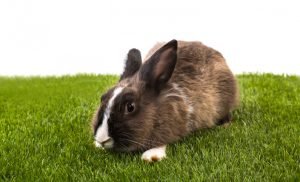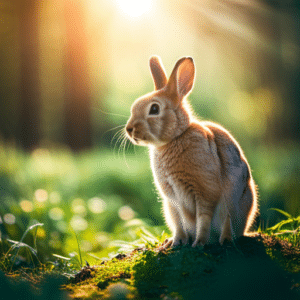As a rabbit owner, have you ever wondered, “Can pet rabbits live outside in the summer?” You’re not alone! Many pet owners are curious about the possibility of transitioning their indoor rabbits to an outdoor environment, especially during the warm season. In this blog post, we’ll explore the essential tips for safely adapting your pet rabbit to outdoor living, from understanding their unique needs to recognizing and preventing heatstroke. Let’s hop right in!
Short Summary
Adapting pet rabbits to outdoor living requires careful planning and a gradual transition.
Provide secure hutch, exercise run, predator protection, and cooling techniques for hot weather.
Monitor temperature & humidity levels while providing socialization opportunities & enrichment activities for optimal health & well-being.
Adapting Pet Rabbits to Outdoor Living
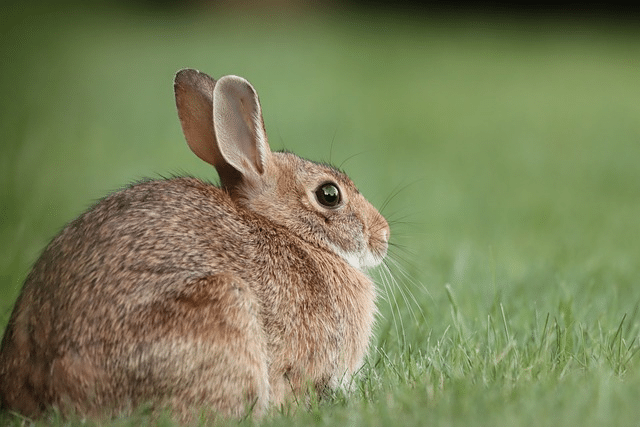
While wild rabbits are naturally adapted to living outdoors, domestic rabbits have different needs and requirements. Transitioning your pet rabbit from an indoor environment to an outdoor environment requires careful planning and preparation to ensure their safety and comfort. Understanding the differences between wild and domestic rabbits is the first step in this journey, as not all rabbits are the same.
One crucial aspect to consider is the gradual transition from indoors to outdoors. It’s essential to wait until the springtime before introducing your indoor rabbit outdoors, as they would have shed their winter coat and developed a new, sleek coat by then. Providing a weatherproof hutch and an exercise run are also necessary steps to ensure a safe outdoor environment for your rabbit.
Understanding Domestic Rabbit Needs
Pet rabbits have specific temperature requirements that need to be met for their well-being. The recommended temperature range for both indoor and outdoor rabbits is 10 to 21 degrees Celsius (50-70°F). It’s essential to monitor the temperature of your rabbit’s outdoor environment and ensure they can regulate the thickness of their coat as the seasons change.
To help your rabbit acclimate to outdoor temperatures, you can add extra hay to their hutch for nesting, and cover the hutch with a blanket or tarpaulin. These measures will help maintain their warmth and keep them cool in the summer months.
If the temperature drops below 10 degrees Celsius, it’s best to move your rabbit indoors or to a shed to protect them from potential health issues.
Preparing a Safe Outdoor Environment
In addition to temperature considerations, safety is of the utmost importance when preparing an outdoor environment for your pet rabbit. A secure hutch, a spacious and protected exercise run, and a yard safe from predators are essential components of a safe outdoor environment. If you live in an area with mosquitoes, covering the entire hutch and running with mosquito netting is an effective way to protect your rabbit from these pests.
Regular interaction with your outdoor rabbits is also crucial, as it helps prevent boredom and promotes socialization. Ensuring your rabbit has opportunities for social contact, whether it’s with you, other rabbits, or even other pets, will contribute to their overall happiness and well-being.
Summer Safety Tips for Outdoor Rabbits
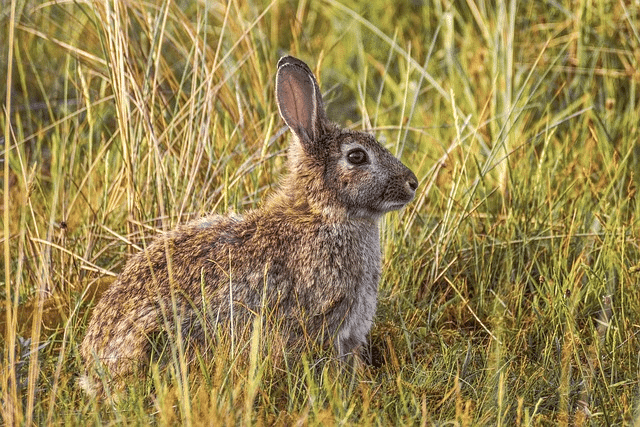
When it comes to caring for outdoor rabbits during the summer months, safety should always be a top priority. As temperatures rise, it’s important to ensure your rabbit stays cool and hydrated, as excessive heat can put them at risk of heatstroke.
Additionally, predator protection should be a key concern, as both wild and domestic predators pose a threat to your rabbit’s safety.
Temperature Regulation and Monitoring
Temperature regulation is crucial for keeping your rabbit comfortable during hot summer months. Providing cool surfaces, such as ceramic or marble tiles, can help your rabbit maintain a healthy body temperature. Spraying a few drops of cool water behind your rabbit’s ears can also help them cool down if they show signs of overheating.
Monitoring the temperature of your rabbit’s outdoor environment is essential, as temperatures outside their comfort range can lead to health issues. If you notice any signs of overheating, such as hot ears or panting, it’s important to take action immediately and adjust your environment accordingly.
Hydration and Diet
Proper hydration is vital for your outdoor rabbit’s health during the summer. Providing fresh water and refilling it several times daily can help ensure your rabbit stays hydrated. On particularly hot days, adding ice cubes to their water bowl can help keep the water cool and encourage them to drink more.
In addition to water, a hay-based diet supplemented with fresh greens washed in cool water can help your rabbit stay hydrated and maintain a healthy digestive system. Keep an eye on your rabbit’s food and water intake, and consider using a water bottle instead of a bowl if they have a habit of overturning their bowls.
Predator Protection
Protecting your rabbit from predators is crucial to their safety and well-being. Ensure their hutch is secure and resilient enough to deter predators and provide compartments for your rabbit to seek refuge. Covering the enclosure with a tarpaulin at night and implementing as many deterrents as possible can help prevent predators from gaining access to your rabbit’s outdoor environment.
Recognizing and Preventing Heatstroke in Rabbits
Heatstroke is a dangerous and potentially life-threatening condition for rabbits, especially those with thick fur coats. In temperatures above 80°F (27°C), it’s vital to recognize the signs of heatstroke early and take action to cool your rabbit down.
Signs of heatstroke in rabbits include panting, drooling, lethargy, and a body temperature above 103°F (39°C). If you suspect your rabbit is suffering, contact your veterinarian.
Symptoms of Heatstroke
Symptoms of heatstroke in rabbits include panting, drooling, lethargy, and red ears. If you notice any of these signs in your rabbit, it’s essential to take action immediately and seek veterinary assistance. Heatstroke can be fatal if left untreated, so it’s important to act quickly.
Cooling Techniques
If your rabbit is experiencing heatstroke, there are several cooling techniques you can use to help them recover. Spraying cool water on their ears, providing frozen water bottles for them to rest against, and offering shade can all help lower your rabbit’s body temperature.
However, it’s important not to submerge your rabbit in cold water or attempt to give them a bath, as this could cause them to go into shock.
Socialization and Enrichment for Outdoor Rabbits
Ensuring your outdoor rabbit has opportunities for socialization and enrichment is vital for their overall happiness and well-being. Bonding with other rabbits and providing a variety of toys and activities can help keep your rabbit entertained and mentally stimulated.
Introducing your rabbit to the outdoors during mild weather will also make the process smoother and more enjoyable for both you and your rabbit.
Bonding with Other Rabbits
Forming social bonds with other rabbits offers numerous benefits for your pet, including companionship and increased well-being. When introducing rabbits, it’s important to do so gradually to ensure their comfort and prevent potential aggression.
Successful bonding between rabbits can be indicated by mutual grooming, engaging in play activities together, and co-sleeping.
Toys and Activities
Providing a variety of toys and activities for your outdoor rabbit can help keep them entertained and mentally stimulated. Appropriate toys for outdoor rabbits include willow balls, hay balls, plastic balls, straw or wicker baskets, paper towels or toilet paper rolls, and mazes constructed from boxes.
Additionally, rabbits enjoy tunnels, grass houses, and forage mats, as they like to chew, dig, run, and jump. Ensuring a secure and escape-proof environment for your rabbit is essential for their safety during playtime.
Caring for Baby Rabbits Outdoors
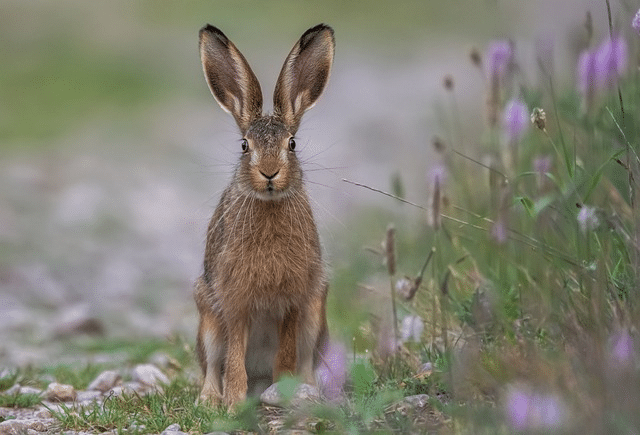
Caring for baby rabbits outdoors requires special precautions and considerations. Age-appropriate transition and extra bedding for warmth are necessary to ensure the health and well-being of your young rabbit.
Temperature is an important factor to consider when caring for baby rabbits outdoors. The temperature should be monitored to ensure that it is not too hot or too hot.
Age-Appropriate Transition

Baby rabbits should remain indoors until they reach 6 to 8 weeks of age, as they are still in the process of growth and development.
Introducing baby rabbits to solid foods and alfalfa hay at the appropriate age is also important for their health and wellbeing.
Special Precautions for Young Rabbits
Ensuring the safety of young rabbits outdoors is crucial. Providing them with shade, cool water, and a secure, clean, dry, and well-stocked outdoor home is essential.
It’s important to monitor temperature and humidity levels in their environment and adjust as necessary to keep them comfortable and healthy.
Summary
In conclusion, transitioning your pet rabbit to outdoor living during the summer months is possible with careful planning, preparation, and attention to their unique needs. From understanding their temperature requirements and providing a safe outdoor environment to monitoring for signs of heatstroke and ensuring proper socialization, there are numerous factors to consider to ensure your rabbit’s safety, health, and happiness outdoors.
As a responsible rabbit owner, it’s essential to stay informed about the best practices for caring for your furry friend in an outdoor environment. By following the tips outlined in this blog post, you can help your rabbit enjoy the great outdoors while keeping them safe and healthy. So go ahead, let your rabbit hop into the joys of outdoor living this summer!
Frequently Asked Questions
What temperature is too hot for rabbits?
Rabbits are very susceptible to heat stress, and they can quickly succumb to heatstroke in temperatures higher than 85°F (29°C). It’s important to ensure that rabbits have adequate ventilation and access to cool areas to stay comfortable and healthy on hot days.
Providing rabbits with a cool area to retreat to, such as a shady spot in the garden or a cool room in the house, can help them stay comfortable and healthy in hot weather. Additionally, it’s important to make sure that everything is working properly.
How do I keep my rabbit outside in the summer?
In order to keep your rabbit safe in the summer heat, be sure to provide adequate shade and fresh water.
Also, move their hutch and run out of direct sunlight, and consider keeping them inside during extreme temperatures. This will help ensure that your rabbit stays comfortable all season long!
How can I tell if my rabbit is too hot?
By monitoring your rabbit’s behavior and physical condition, you can tell if they are too hot. Look out for signs such as warm ears and feet, increased breathing rate, open-mouth breathing, not eating, being dull or unresponsive, becoming restless or uncoordinated, or having a blue-tinged mouth and nose.
If you see any of these symptoms, it is important to take action to cool them down.
When should rabbits be brought inside?
For rabbits living in areas with cold winter temperatures, it’s best to bring them inside when temperatures drop below 20F (-6.67C). This will ensure that they stay safe and comfortable during the cold season.

